Are Grow Lights Harmful to Humans? The Eye-Opening Truth
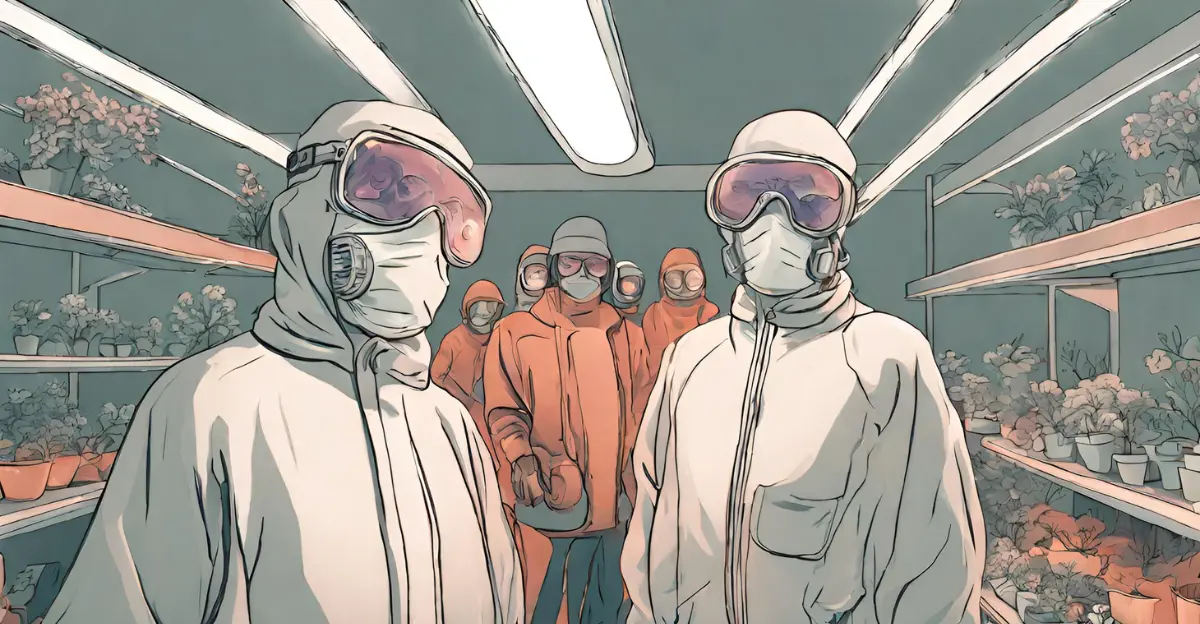
While LED grow lights have revolutionized indoor horticulture, their intense rays can be downright dangerous if you’re not careful.
Look, we’re not trying to be alarmists here, but the science doesn’t lie.
Certain types of light emitted by LED grow lights, particularly in the blue and ultraviolet (UV) spectrums, can be problematic if you’re exposed for too long.
From retina damage to corneal inflammation to straight-up sunburns, the potential health risks are very real and not to be taken lightly.
In this blog post, we’ll break down exactly what makes these lights potentially harmful, and most importantly, arm you with science-backed tips to protect yourself.
Quick Key Takeaways
While LED grow lights have revolutionized indoor gardening, certain wavelengths they emit like blue and ultraviolet (UV) light can potentially damage your eyes and skin with excessive exposure. However, risks are generally lower than natural sunlight and can be mitigated through proper precautions.
What Types of Light Can Be Harmful?
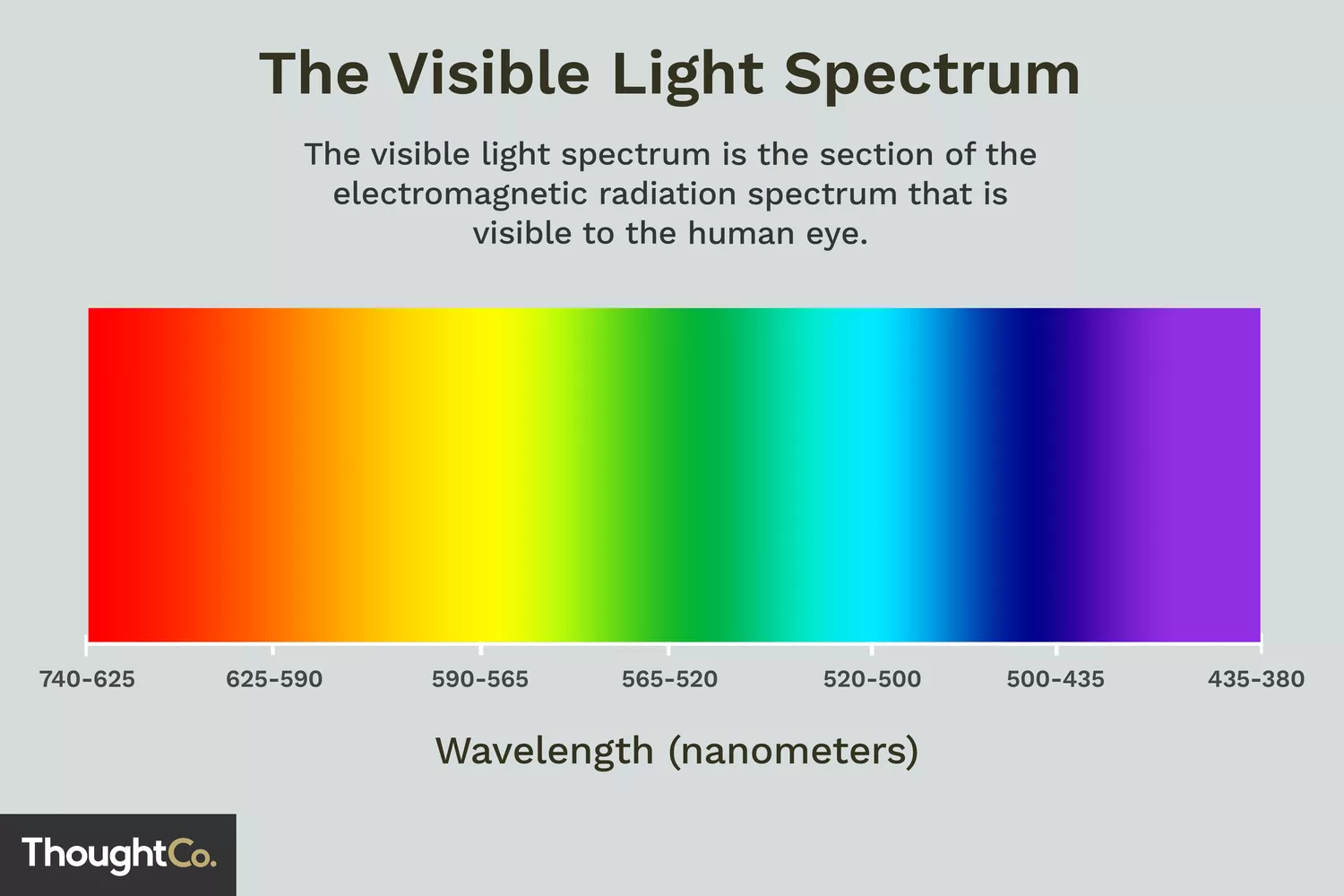
Before diving into this section, let’s be clear—I am not here to scare you off LEDs.
In fact, modern LED grow lights can be a godsend compared to old-school lighting like high-pressure sodium.
But like anything powerful, they need to be handled with care if you want to steer clear of some nasty eye and skin issues.
We’ve heard way too many sob stories from growers who treated their grow lights like harmless toys only to pay the price with damage.

No thanks, that’s not the path for smart folks like you!
Here are the main light bad boys you need to watch out for:
Blue Light (400-500 nm)
This is usually the biggest culprit when it comes to LED grow lights.
Why?
That intense blue spectral range can be outright brutal on your retinas. Excess exposure increases your risk of age-related macular degeneration and straight-up vision loss over time (source).
Ultraviolet (UV) Radiation (100-400 nm)
While LED grow lights don’t pack as much UV punch as old fluorescent, it’s still no joke if you’re overexposed.
We’re talking accelerated skin aging, sunburns, and even a higher skin cancer risk in the worst cases (source).
High-energy Visible (400-700 nm)
This one gets overlooked since LED bulbs seem so nice and friendly.
Wrong!
The sheer intensity of their visible light emission can still spell big trouble.
Think retinal damage, eye strain, and headache city—all because you treated those bright LEDs like staring contests were acceptable (source).
The takeaway?
Every type of light from grow lamps can be harmful without the right protection and moderation. Don’t underestimate how easily your eyes and skin can get torched if you’re not careful.
FURTHER READING: What Color Light Is Worst for Plant Growth (2024 Updated)
Exactly How Harmful Are LED Grow Lights?
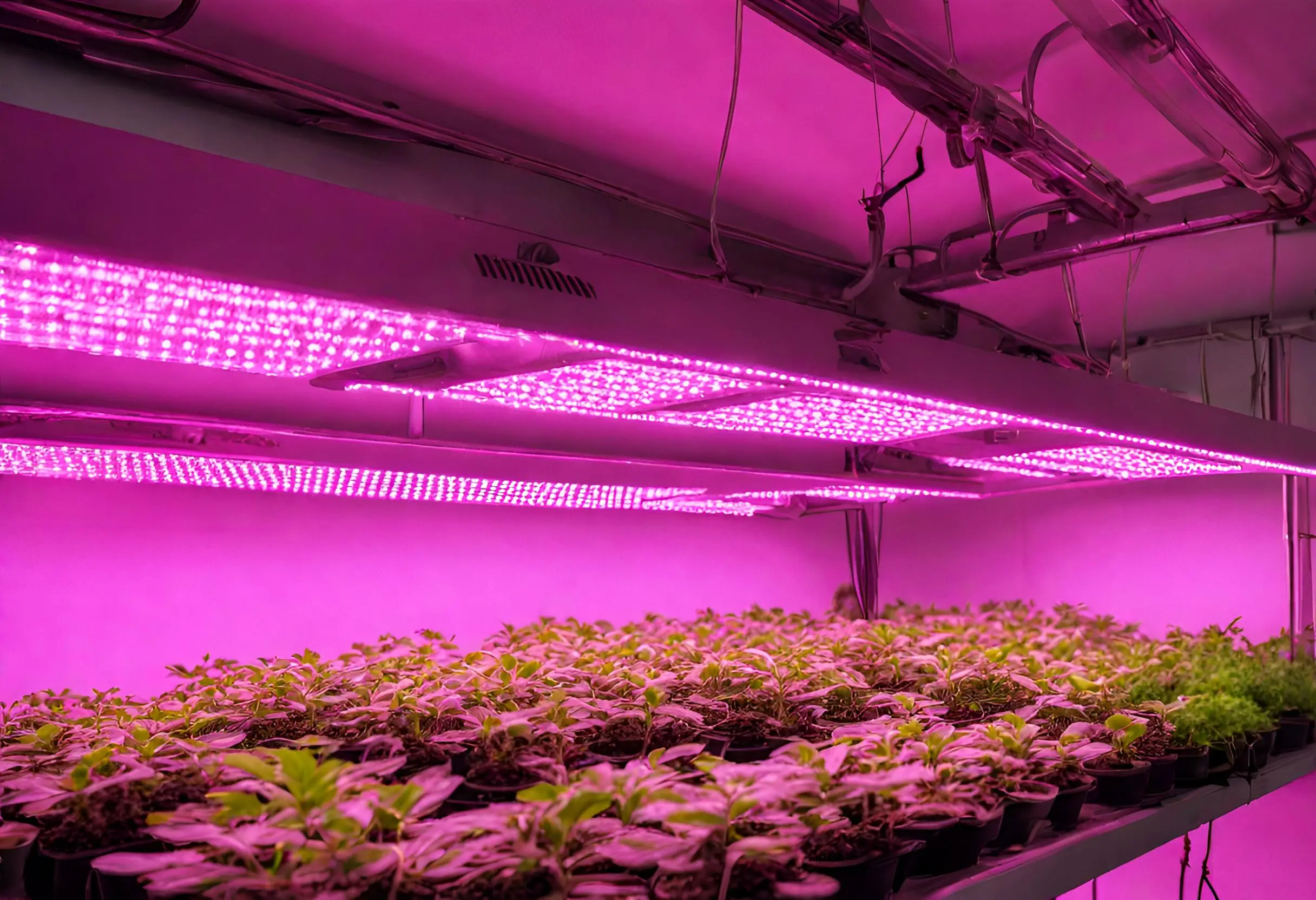
The short answer?
Yes, LED grow lights can potentially emit harmful light if you’re not using them responsibly. But before you start feeling spooked, hear me out.
Most high-quality LED grow lights are designed to provide an optimal full spectrum to maximize plant growth.
But in doing so, they inherently emit certain wavelengths that can be dangerous with excessive exposure.
Now, before you start sweating bullets, it’s crucial to understand that the potential risk depends heavily on factors like:
Most quality LED grow light manufacturers follow safety guidelines and try to limit emissions of harmful wavelengths as much as possible.
But at the end of the day, it’s up to you to use them responsibly.
While LED grow lights do carry some risk if used recklessly, they are generally considered much safer than old-school options like high-pressure sodium (HPS) or metal halide (MH) lamps.
Potential Health Risks of LED Grow Light Exposure
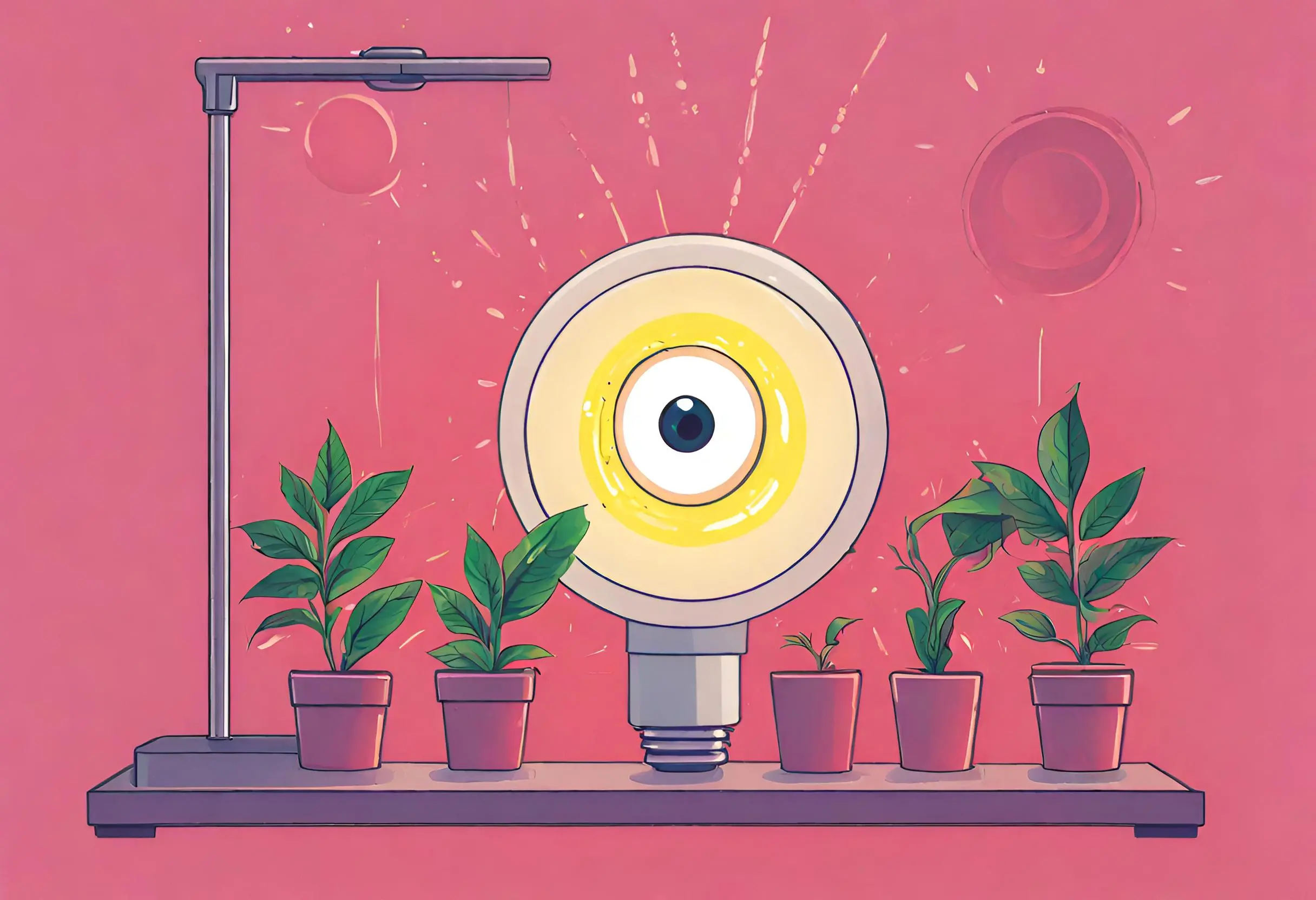
Eye Damage
The blue and ultraviolet (UV) light emitted by many LED grow lights can be incredibly harsh on our peepers.
Prolonged exposure to these wavelengths can lead to a range of eye-related issues, from eye strain and retinal damage to age-related macular degeneration and even vision loss over time (source).
The cornea isn’t safe either, with conditions like photokeratitis (a nasty corneal burn) being a real threat with excessive UV exposure.
FURTHER READING: Are Grow Lights Bad for Your Eyes? A Complete Safety Guide
Skin Damage
Just like our eyes, our skin is also susceptible to the wrath of LED grow lights, particularly those emitting significant UV and high-intensity visible light.
We’re talking about sunburn-level damage, accelerated skin aging, and even an increased risk of skin cancer in the worst/rare cases.
And no, a “healthy glow” isn’t worth risking your well-being.
Disrupted Circadian Rhythms
The blue light emitted by LED grow lights can also mess with our body’s natural sleep/wake cycles.
This light suppresses melatonin production, the hormone that helps us catch those crucial zzz’s.
Chronic circadian disruption has been linked to an increased risk of psychiatric disorders and various chronic diseases, so it’s not something to take lightly.
Quantifying the Risks
Now, before you start having nightmares about your beloved LED grow lights turning into health hazards, let’s put things into perspective.
While the risks are real, they are generally lower compared to natural sunlight and other grow light technologies like high-pressure sodium (HPS) or metal halide (MH) lamps.
For example, one study found that quality LED grow lights emit less than 1% of the UV radiation of sunlight.
Another noted that the cornea can filter out most UVB rays, but UVA can still penetrate the retina. Prolonged close exposure should be avoided, but responsible use mitigates the risks.
However, it’s important to note that the potential for harm increases with factors like proximity to the lights, higher intensity/output setups, longer exposure times, and direct ocular or skin exposure.
Additionally, some LED grow lights contain a higher proportion of UV and blue light, which can amplify the risks.
Safety Tips for Using LED Grow Lights

To recap, the intense blue and UV light can potentially cause retina damage, corneal inflammation, sunburns, and more nasty issues.
With the proper precautions and responsible usage, you can reap the rewards of LEDs while protecting your well-being.
Here’s what you need to do:
Protect Your Eyes
Avoiding looking directly at the lights is rule #1.
If you must work up close, invest in specialized grow room glasses. These block out harmful wavelengths while letting you see your plants’ true colors.
And sorry workaholics, but you’ll need to limit your daily exposure time too. Take breaks often to avoid being a squinty mess. Set reminders on your phone if you must.
Keep Your Distance
Follow the light manufacturer’s recommendations, but keeping at least 12–18 inches between your skin and the LED bars is a wise move.
If you have certain high-output lights, bump up that minimum distance. The higher the intensity, the further back you should work (source).
Dress for Safety
Next time you go into your grow space, cover up with long sleeves, pants, and sun hats to shield exposed skin from excessive UV rays.
And if you plan to spend extended periods, safety glasses, gloves, and an SPF moisturizer wouldn’t hurt.
Mind Your Environment
Proper ventilation is key for two reasons:
- Regulating temperatures to prevent burns.
- And flushing out any excess UV radiation or emissions.
Keep things well-ventilated and cooled to a comfortable level while ducting hot air from the grow lights directly outside if possible.
Be Fastidious About Cleanliness
Over time, dust, and debris buildup can affect light output and performance. More importantly, it’s also a potential fire hazard that could put you and your plants at risk.
Regularly wipe down your LED bars, drivers, and diodes with a lightly damp cloth – but only when powered off and unplugged to avoid shocks.
FURTHER WATCH: Here’s a short video that quickly shows you how to safely clean your grow lights.
Invest in Quality Lights
I get it, we all love a good deal. But when it comes to LED grow lights, you get what you pay for in terms of quality and safety.
Any old generic, no-name LED light is an accident waiting to happen. Stick to reputable brands that adhere to certifications like IP-66 water and dust resistance.
If it ain’t ETL or UL listed, give that sketchy bargain a hard pass. Your well-being is worth paying a bit more for peace of mind.
SIDENOTE: ETL and UL listings indicate the product has met safety standards through rigorous testing.
By following these comprehensive tips, you’ll put yourself in the best position to grow safely and productively under LED light.
Advancements in Eye-Friendly LED Grow Light Technology
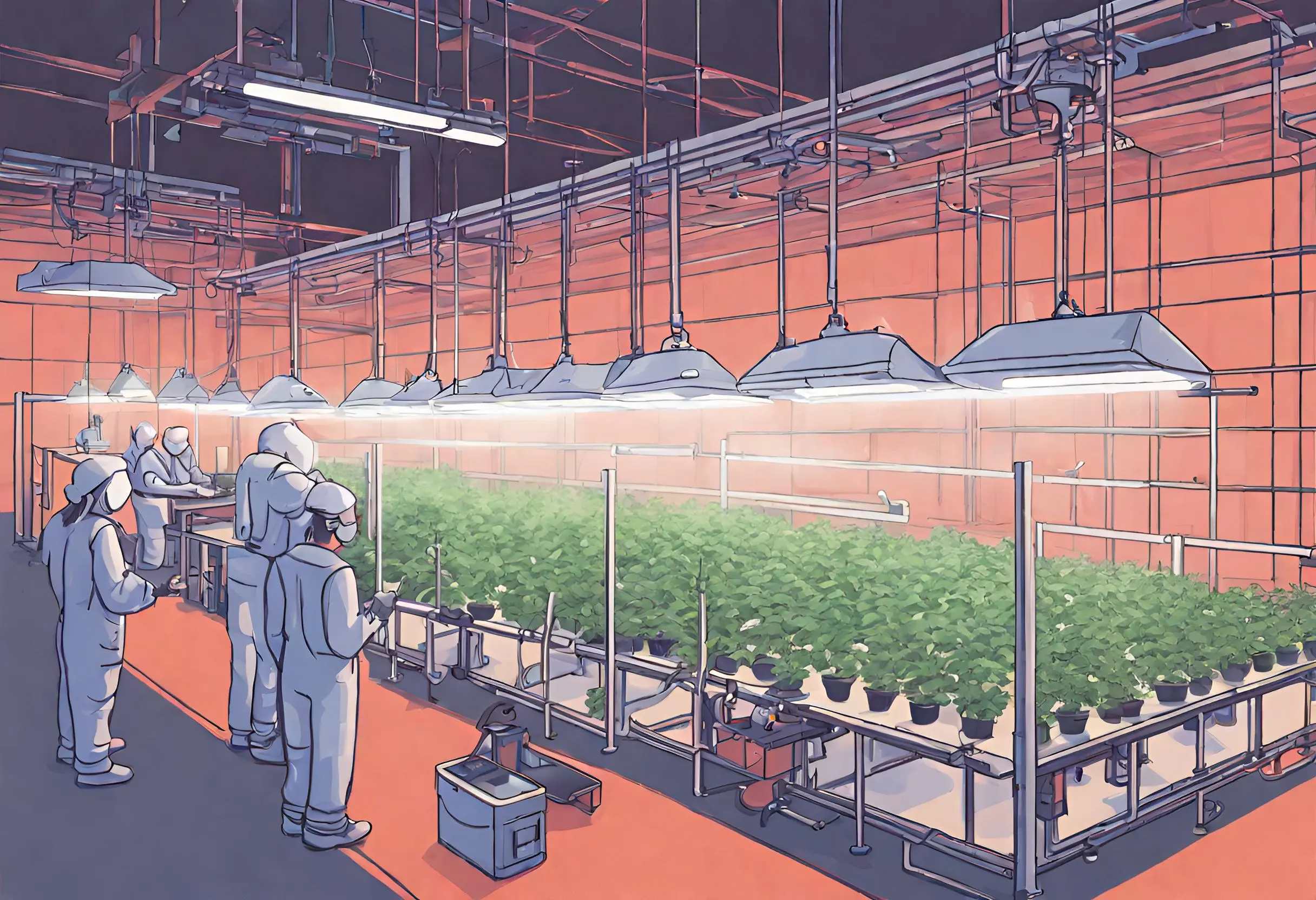
LED grow light companies have wised up to the potential eye hazards of their products.
Recent advancements focus squarely on making lights safer and more eye-friendly:
LED grow light manufacturers are hard at work optimizing their lights to be more eye-friendly through advanced spectra, phosphors, and mitigation techniques.
Meet your guide
Dhruvir Zala